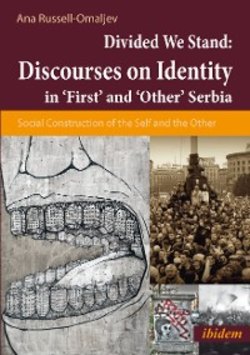Читать книгу Divided We Stand: Discourses on Identity in ‘First’ and ‘Other’ Serbia - Ana Omaljev - Страница 13
“First” and “Other” Serbia discourses
on Europe and identity
ОглавлениеHere I intend to show in more detail the ways in which “First” and “Other” Serbia act as the “constitutive outside” for each other. The Serbian public sphere is dominated by debates between these groups standing at opposite ends of the ideological and political spectrum. These debates indeed demonstrate how the notion of a divided society is continually being constructed. I put forward that First and Other Serbia, as different conceptions of political community—ranging from the nationalist, Euroskeptic right, to the liberal and extremely pro-Western left—produce fields of discourse on Europe in which competing claims are worked out in the public sphere. In simple terms, the First Serbia discourse is identified as being dominated by themes of tradition, religion and a highly victim-centered understanding of history, with a nationalistic orientation which frequently puts emphasis on an illiberal value system.[62] In Ramet’s descriptions in 2011, this was embodied by both ultra nationalists and soft nationalists, such as the politicians Aleksandar Vučić and Tomislav Nikolić, and academics grouped around the Serbian Academy of Sciences and Arts (SANU) such as Dobrica Ćosić and Mateja Bećković.[63] This discourse gained support from remnants of the Radical Party when in November 2014 Vojislav Šešelj returned to Serbia after 11 years spent on trial at the ICTY. Moreover, significant players outside the government include ultra-right NGOs and movements such as Srpski sabor Dveri—their manifesto is analyzed in Chapter 3—and Obraz, a “clerico-fascist” organization outlawed by the Serbian constitutional court in June 2012.[64]
The First Serbia discourse is a nationalist, right-wing, Euroskeptic discourse which is “turned inward.” The in-group bias in predication is remarkable; First Serbia actors in general mention only what they consider to be the positive aspects of Serbian history and culture, while denying, obfuscating or simply ignoring the negative aspects of the past and present. As argued by Van Dijk, such in-group bias represents a very common ideologically-based strategy of positive self-presentation and negative presentation of the other.[65] In this discourse Serbs are constructed as victims and there is no or little reference to regional enmities of the recent past or responsibility for war crimes. The in-group bias in this particular sub-type of predication, as Wodak points out, often leads to an assertion of the superiority of one’s own culture and civilization.[66] In this type of in-group favoritism, Serbia is constructed as the home of noble values and high culture.
On the opposite side of political spectrum, the work Other Serbia and Intellectuals and War, published in 1992, is the product of public gatherings, and is a representation of the core of the political and cultural life of the so-called Other (in this sense different, non-nationalistic) Serbia. This Serbia was first envisioned as opposition to the militaristic nationalism of the Milošević regime, to its xenophobia and populism, which, in the view of many, had overtaken Serbian society in the early 1990s.[67] In post-2000 Serbia, most attempts at opening a public debate have come from a relatively small group of local activists and human rights NGOs, such as Women in Black, the Youth Initiative for Human Rights, the Belgrade Centre for Human Rights, the Humanitarian Law Centre and the Helsinki Committee for Human Rights from Belgrade.[68] Within Other Serbia groupings, Ramet has identified two groups, the first being the “hard liberals” who subscribed to civic values and in many cases also advocate gender equality and tolerance of sexual minorities.[69] Ad
